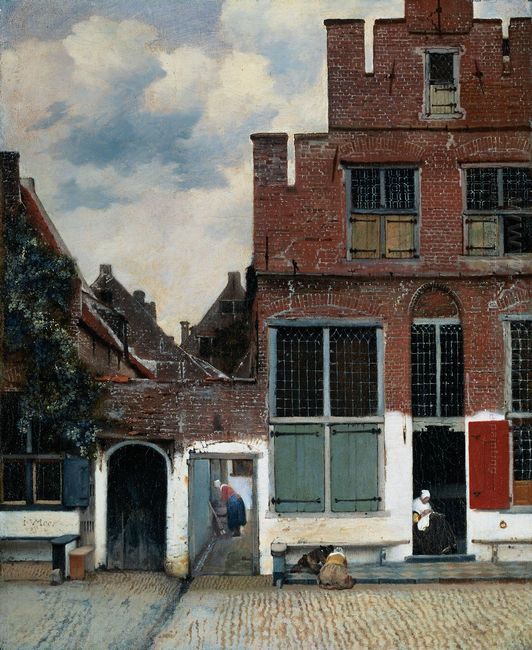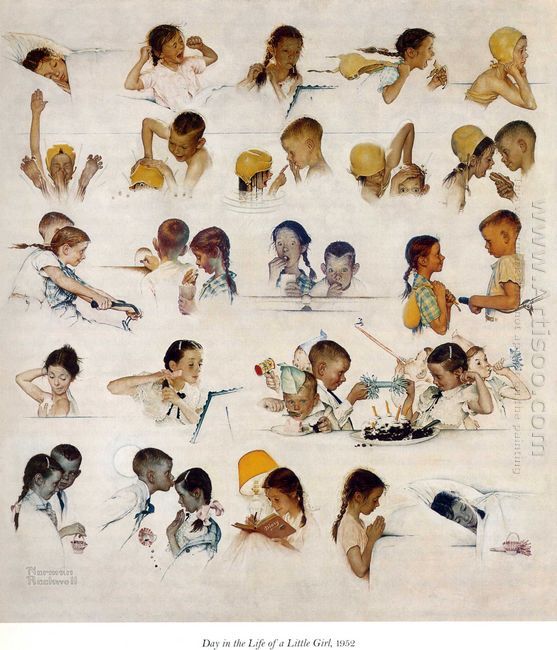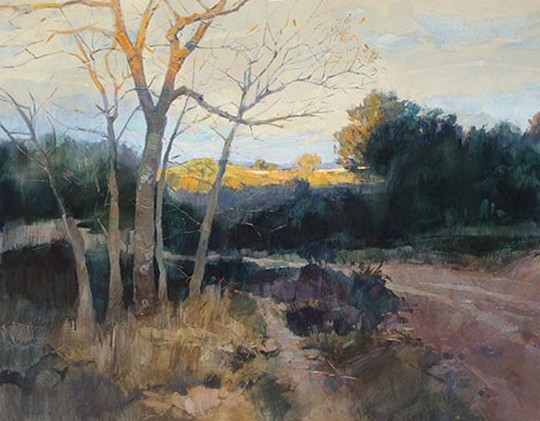The Little Street (Het Straatje) is a genre-painting created by the Dutch Baroque painter Johannes Vermeer who specialized in domestic interior scenes of ordinary life. His entire life was spent in the town of Delft and he seems to have never been particularly wealthy, perhaps because he painted relatively few works in his lifetime, leaving his wife and children in debt at his death.
This masterpiece is painted during his mid-20s, but already shows his ability to express the intimacy of everyday surroundings. It is a very simple and appealing painting, which conveys to the viewer a typical aspect of everyday townlife in Dutch of the period: namely, a quiet built-up street, a house and four small figures - two women occupied by mundane tasks, and two children playing. The house dates from the second half of the 15th or the beginning of the 16th century according to architectural historians, shown to be a dwelling for modest folk. Overgrown grape vines can be seen in a large number of Dutch cityscapes. Since Dutch light was so weak that the grapes failed to produce drinkable wine, they must have been kept for their decorative effect. A fully-clothed maid is depicted washing laundry over a wooden barrel at the end of the passageway. An unused broom stands nearby waiting to be taken up and wielded over pavements. In the 17th century, sweeping and booms were associated with spiritual cleanliness and purity. Domestic virtue was essential to the Christendom and Dutch nationhood. One of the most touching details in this work is that of the two children absorbed in their play. Although they occupy a small portion of the painting, much of the intimate warmth that pervades the work would be deprived of without their presence. The old woman is doing some needlework, sewing or something judging by the large piece of clothe on her lap. Sewing, like spinning, was an attribute of domestic virtue of Biblical origin. Thus, Vermeer's figures have been seen as behavioral models
Contemporaries of Johannes Vermeer like Pieter de Hooch and Jan Steen also painted bricks and mortar, which are nearly identical at first glance except for their varied architectural features. Nonetheless, Vermeer's house remains to be the most naturalistic townscape in Dutch painting. What makes The Little Street extraordinarily different is his calm majesty, mastery of light as well as his ability to allow the viewer to share in the scene's calmness and intimacy. The painting must be chronologically ranged rather early, because he was the initiator of the genre painting in this particular fashion. In addition, Vermeer's use of linear perspective, as demonstrated by his depiction of the alleyway, is also exemplary.













